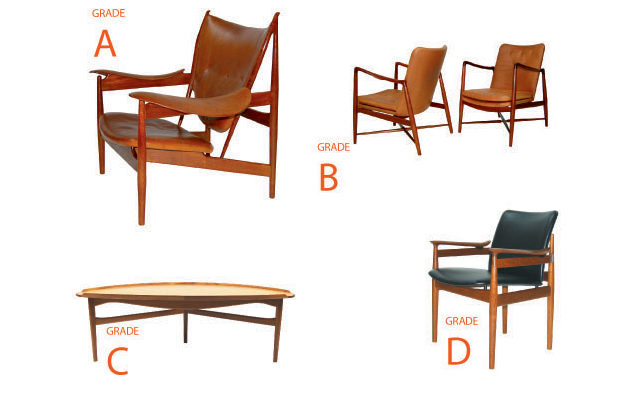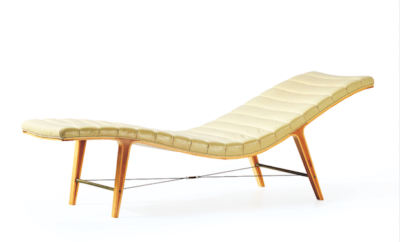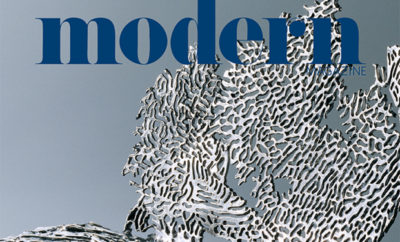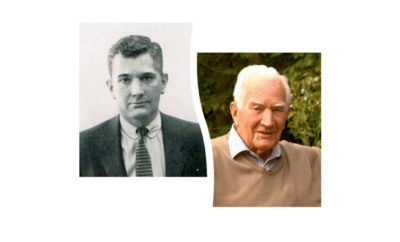Use your ← → (arrow) keys to browse

Now to the very top of the heap: any Juhl design made by Niels Vodder. The two began their collaboration in the 1940s, showing Juhl’s work at Denmark’s Cabinetmaker’s Guild exhibitions. Juhl’s controversial designs shocked at first and then soon wowed critics. After a clumsy start in 1940, when Juhl showed work that was highly influenced by modern sculpture but was, in my opinion, an over-upholstered mess, he began to collaborate with Vodder on more highly crafted work, creating chairs with a “floating” back and seat and flowing and sculpted arms.
This theme was repeated throughout his designs for Vodder during the 1940s, culminating in his most spectacular and majestic creation, the Ferrari of all Juhl chairs, the “Chieftain” of 1949. The example pictured here is one of the earliest models: note the leather glued directly to the metal of the flared down armrests. No padding there, as in later versions. Made of solid wood and entirely handcrafted, this example retains its original leather and bears a two-line stamp reading “ niels vodder, cabinetmaker/ copenhagen denmark,” with not a nod to the designer of this magnificent gem (though later versions do include Juhl’s name in the mark).
When the “Chieftain” was shown at the Cabinetmaker’s Guild exhibition in 1949, Juhl decorated Vodder’s stand with items relating to his inspiration for the wooden frame—primitive weapons, spears, and other forms that he drew on to master the chair’s construction. The curving tips are features he had used previously in the “NV 45” chairs. There was obviously a limited production of the Juhl designs made by Vodder— the story goes that there were fewer than one hundred “Chieftains” in the original run, with the rosewood models going to Danish embassies. Subsequent runs were made, but the originals are the gold standard. This design showcases Juhl’s creativity and mastery of artistic form and function and solidly places him in the top five Danish modernist masters. To my mind, all others pale in comparison.
Appropriate prices depend on the production run from which they derive.
A Baker-produced model should command $10,000 to $12,000; a much later Soren Horn or Niels Roth Andersen version can sell for $18,00 to $20,000; an early all-original chair can easily go up to $85,000 or more.
Use your ← → (arrow) keys to browse














